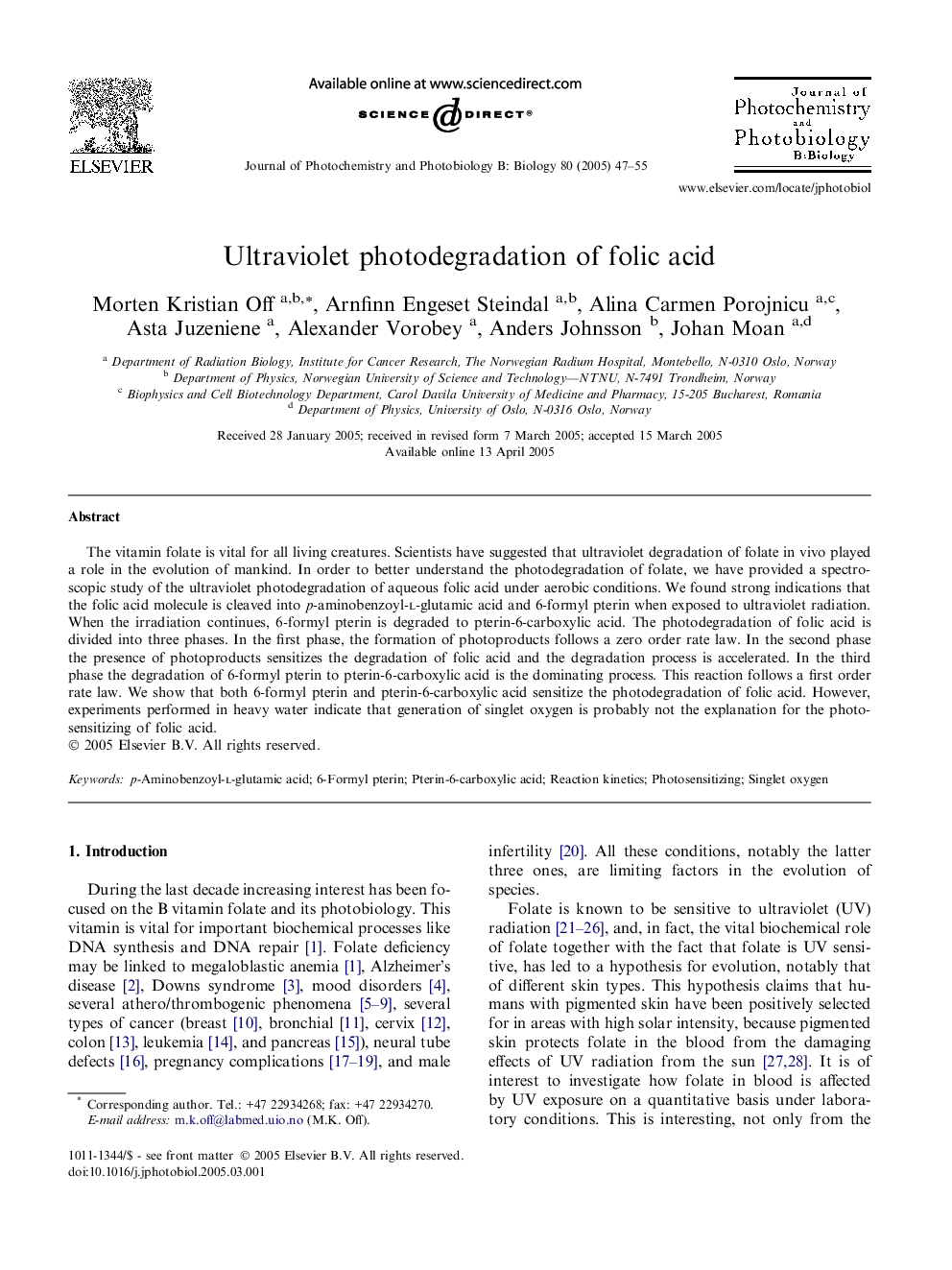| Article ID | Journal | Published Year | Pages | File Type |
|---|---|---|---|---|
| 9607040 | Journal of Photochemistry and Photobiology B: Biology | 2005 | 9 Pages |
Abstract
The vitamin folate is vital for all living creatures. Scientists have suggested that ultraviolet degradation of folate in vivo played a role in the evolution of mankind. In order to better understand the photodegradation of folate, we have provided a spectroscopic study of the ultraviolet photodegradation of aqueous folic acid under aerobic conditions. We found strong indications that the folic acid molecule is cleaved into p-aminobenzoyl-l-glutamic acid and 6-formyl pterin when exposed to ultraviolet radiation. When the irradiation continues, 6-formyl pterin is degraded to pterin-6-carboxylic acid. The photodegradation of folic acid is divided into three phases. In the first phase, the formation of photoproducts follows a zero order rate law. In the second phase the presence of photoproducts sensitizes the degradation of folic acid and the degradation process is accelerated. In the third phase the degradation of 6-formyl pterin to pterin-6-carboxylic acid is the dominating process. This reaction follows a first order rate law. We show that both 6-formyl pterin and pterin-6-carboxylic acid sensitize the photodegradation of folic acid. However, experiments performed in heavy water indicate that generation of singlet oxygen is probably not the explanation for the photosensitizing of folic acid.
Related Topics
Physical Sciences and Engineering
Chemical Engineering
Bioengineering
Authors
Morten Kristian Off, Arnfinn Engeset Steindal, Alina Carmen Porojnicu, Asta Juzeniene, Alexander Vorobey, Anders Johnsson, Johan Moan,
